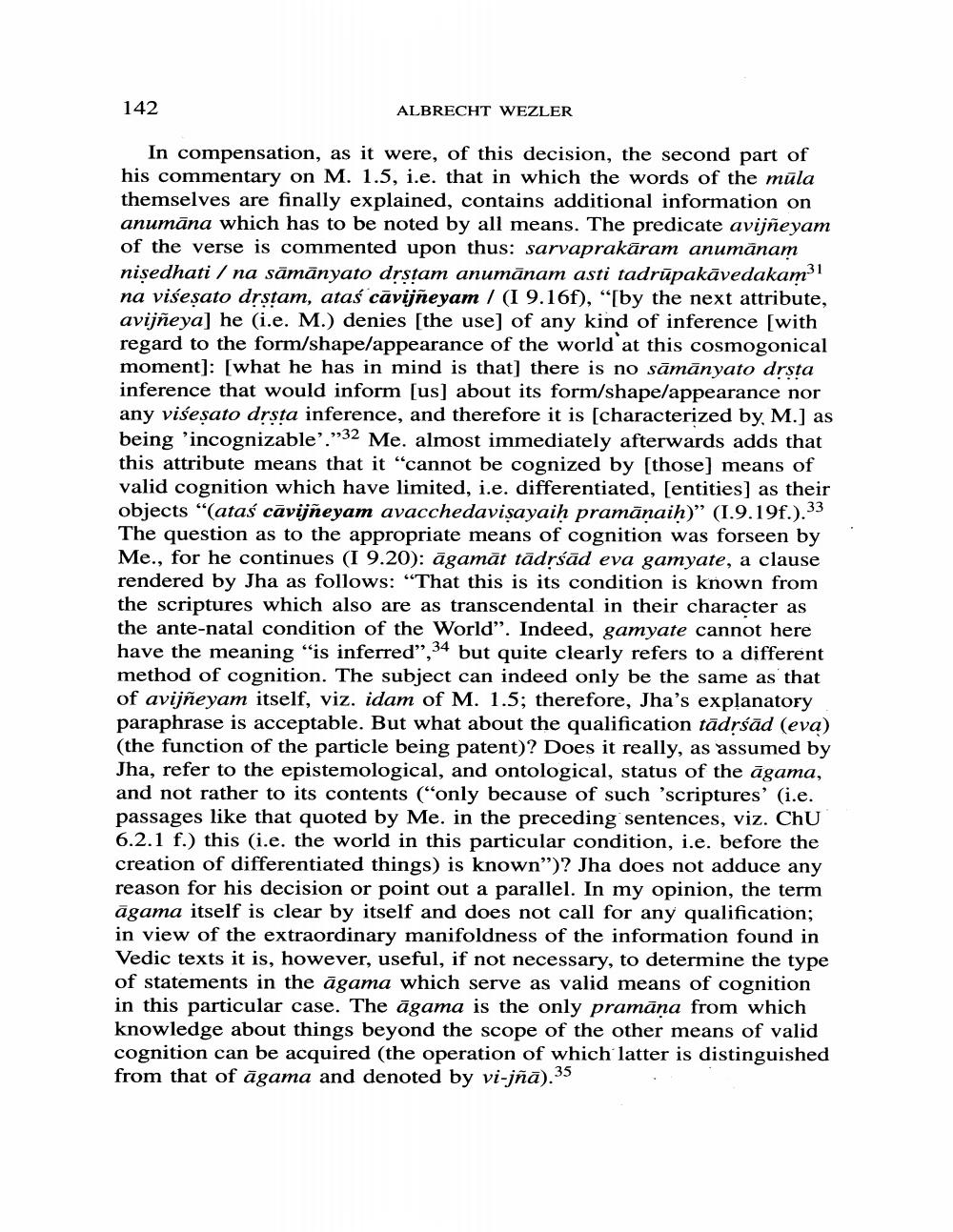Book Title: Medhatithi On Samanyato Drstam Author(s): Albrecht Wezler Publisher: Albrecht Wezler View full book textPage 4
________________ 142 ALBRECHT WEZLER In compensation, as it were, of this decision, the second part of his commentary on M. 1.5, i.e. that in which the words of the mula themselves are finally explained, contains additional information on anumāna which has to be noted by all means. The predicate avijñeyam of the verse is commented upon thus: sarvaprakāram anumānam nişedhati / na sāmānyato drstam anumānam asti tadrūpakāvedakam31 na višeşato drstam, atas cāvijneyam / (1 9.16f), “[by the next attribute, avijñeya] he (i.e. M.) denies [the use] of any kind of inference (with regard to the form/shape/appearance of the world at this cosmogonical moment]: [what he has in mind is that] there is no sāmānyato drsta inference that would inform [us] about its form/shape/appearance nor any visesato drsta inference, and therefore it is (characterized by, M.] as being 'incognizable’.”32 Me. almost immediately afterwards adds that this attribute means that it “cannot be cognized by [those) means of valid cognition which have limited, i.e. differentiated, [entities] as their objects"(atas cāvijñeyam avacchedavisayaih pramānaih)” (1.9.19f.).33 The question as to the appropriate means of cognition was forseen by Me., for he continues (I 9.20): āgamāt tādrśād eva gamyate, a clause rendered by Jha as follows: "That this is its condition is known from the scriptures which also are as transcendental in their character as the ante-natal condition of the World". Indeed, gamyate cannot here have the meaning "is inferred", 34 but quite clearly refers to a different method of cognition. The subject can indeed only be the same as that of avijñeyam itself, viz. idam of M. 1.5; therefore, Jha's explanatory paraphrase is acceptable. But what about the qualification tādrśād (eva) (the function of the particle being patent)? Does it really, as assumed by Jha, refer to the epistemological, and ontological, status of the āgama, and not rather to its contents ("only because of such 'scriptures' (i.e. passages like that quoted by Me. in the preceding sentences, viz. ChU 6.2.1 f.) this (i.e. the world in this particular condition, i.e. before the creation of differentiated things) is known")? Jha does not adduce any reason for his decision or point out a parallel. In my opinion, the term āgama itself is clear by itself and does not call for any qualification; in view of the extraordinary manifoldness of the information found in Vedic texts it is, however, useful, if not necessary, to determine the type of statements in the āgama which serve as valid means of cognition in this particular case. The āgama is the only pramāna from which knowledge about things beyond the scope of the other means of valid cognition can be acquired (the operation of which latter is distinguished from that of āgama and denoted by vi-jñā).35Page Navigation
1 2 3 4 5 6 7 8 9 10 11 12 13 14 15 16 17 18 19
